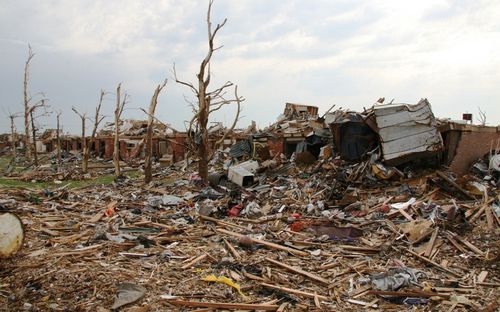The National Weather Service today released its report into this summer’s devastating tornado in Joplin, Mo.
It pulls no punches in blaming the people of Joplin:
The vast majority of Joplin residents did not immediately take protective action upon receiving a first indication of risk (usually via the local siren system), regardless of the source of the warning. Most chose to further assess their risk by waiting for, actively seeking, and filtering additional information.
The reasons for doing so were quite varied, but largely depended on an individual’s ―worldview formed mostly by previous experience with severe weather. Most importantly, the perceived frequency of siren activation in Joplin led the majority of survey participants to become desensitized or complacent to this method of warning. This suggests that initial siren activations in Joplin (and severe weather warnings in general) have lost a degree of credibility for most residents – one of the most valued characteristics for successful risk communication.
But that explanation would also seem to indict trigger-happy meteorologists and officials who “sound the alarm” whenever the skies turn dark and a few lightning bolts begin appearing.
The report recommends a “a non-routine warning mechanism that prompts people to take immediate life-saving action in extreme events like strong and violent tornadoes.”
Short-term, however, this could mean more use of social networks, the report said:
One local media outlet in Joplin reported some success using text messaging and social media (e.g., Facebook) as a method of disseminating warning information and receiving storm reports from residents. In addition, most television stations reported using their Facebook accounts to deliver and receive weather information, including warnings and storm reports; however, among residents interviewed in the field, only a small number stated that this was how they primarily received the warnings. Many current dissemination systems are based on geo-political boundaries and jurisdictions (e.g., counties), including EAS and NWR. This can inadvertently project a sense of over-warning or confusion for the general public when warning polygons overlap or multiple warning polygons are issued for a county. For better or worse, NWR and EAS alerted Jasper County (and Joplin) residents twice within a 10-minute period for tornado warning polygon #30 at 509 pm and polygon #31 at 517 pm CDT.
But if officials — and the media, apparently — don’t begin to better distinguish Joplin-like weather from the typical thunderstorms of summer, anything that’s developed eventually becomes “routine.”

